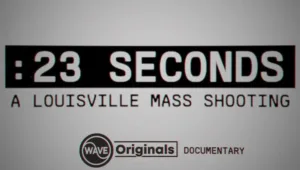AT&T Repack Plan Getting Positive Reviews
 A new plan from AT&T on how best to repack television stations on a regional basis following completion of the incentive auction has received kudos from parts of the TV industry knowledgeable about what will be required. However, there appears to be a few missing pieces, the most glaring of which is the lack of leadership to shepherd the TV broadcasters, tower crews, vendors and others through the process. Read the first part of this Special Report here.
A new plan from AT&T on how best to repack television stations on a regional basis following completion of the incentive auction has received kudos from parts of the TV industry knowledgeable about what will be required. However, there appears to be a few missing pieces, the most glaring of which is the lack of leadership to shepherd the TV broadcasters, tower crews, vendors and others through the process. Read the first part of this Special Report here.
Stations, Tech Cope With Likely Repack Delay
 Since it looks like the FCC will have to repeat its two-part incentive auction process to balance the money promised to broadcasters with what is raised from wireless carriers,broadcasters and their technology suppliers remain in the dark longer about which stations will have to move in the repack and to which channels. But that’s not necessarily a bad thing. It could help sync up the repack with an ATSC 3.0 rollout and provide more time to create the 36-month repack schedule. Some vendors say they could use the extra time to prepare for the expected demand. Read the second part of this Special Report here.
Since it looks like the FCC will have to repeat its two-part incentive auction process to balance the money promised to broadcasters with what is raised from wireless carriers,broadcasters and their technology suppliers remain in the dark longer about which stations will have to move in the repack and to which channels. But that’s not necessarily a bad thing. It could help sync up the repack with an ATSC 3.0 rollout and provide more time to create the 36-month repack schedule. Some vendors say they could use the extra time to prepare for the expected demand. Read the second part of this Special Report here.
Let’s Get Serious About The Repack Gap
The FCC gave assurances this week that no stations will be forced off the air following the incentive auction next year because they can’t build their new channels in 39 months as the FCC has mandated. But that should be taken with a grain of salt until the repack rules are rewritten, perhaps around the regionalized repack scheme cooked up by NAB.
RF expert Jay Adrick, one of the authors of the NAB-financed study that says that the incentive auction repack could take as much as 11 years, says that if the the repack is conducted on a region-by-region basis, wireless buyers could get access to their spectrum in a highly populated region in less than three years.
Starting in May, LG and GatesAir plan to test their Futurecast broadcast system, one of several being considered by the ATSC as the ATSC 3.0 standard, using a moth-balled transmitter and antenna belonging to Tribune’s WJW and operating on ch. 31. Eventually, the facility will be turned over to the NAB for testing other next-gen technology for ATSC.
ATSC Charters ‘I-Team’ For Advanced Alerts
Repeaters Integral To Next-Gen Mobile Future
Single frequency networks may be the technology that makes it possible for stations compete with wireless in reaching viewers on their mobile devices. Proponents say these booster sites can provide strong signals throughout a station’s coverage area. However it comes at a price: capital costs to implement such booster networks could hit $2 million per market.
FCC Repack Sked Troubles Stations, Vendors
 They worry that the timeline proposed for moving stations to new channel assignments following the FCC’s incentive auction is too short. The number of stations that may be required to change channels as part of the repack may exceed the industry’s capaciy to hang antennas, says consultant Jay Adrick. “There are only 14 tower crews in the United States.”
They worry that the timeline proposed for moving stations to new channel assignments following the FCC’s incentive auction is too short. The number of stations that may be required to change channels as part of the repack may exceed the industry’s capaciy to hang antennas, says consultant Jay Adrick. “There are only 14 tower crews in the United States.”
Spectrum Repacking Faces Tricky Timeline
 Broadcasters are anxiously awaiting details of the FCC’s plans for the spectrum auctions and resulting TV band repacking. FCC Chairman Wheeler last month laid out the schedule leading up to the auctions in mid-2015. But he did not offer a timeline for the post-auction channel switching, a process that could involve many stations and extend into 2020.
Broadcasters are anxiously awaiting details of the FCC’s plans for the spectrum auctions and resulting TV band repacking. FCC Chairman Wheeler last month laid out the schedule leading up to the auctions in mid-2015. But he did not offer a timeline for the post-auction channel switching, a process that could involve many stations and extend into 2020.
 The implentation guide, available for download from ATSC, provides a road map for broadcasters looking to launch a mobile EAS service in their market. M-EAS generates a banner alert on capable mobile devices. The system also aims to include rich media, like radar maps, charts and HTML pages.
The implentation guide, available for download from ATSC, provides a road map for broadcasters looking to launch a mobile EAS service in their market. M-EAS generates a banner alert on capable mobile devices. The system also aims to include rich media, like radar maps, charts and HTML pages.
Harris Vice President of Broadcast Technology Jay Adrick has been re-elected ATSC vice chairman for a third one-year term by the ATSC board of directors. Adrick is also in the […]












































